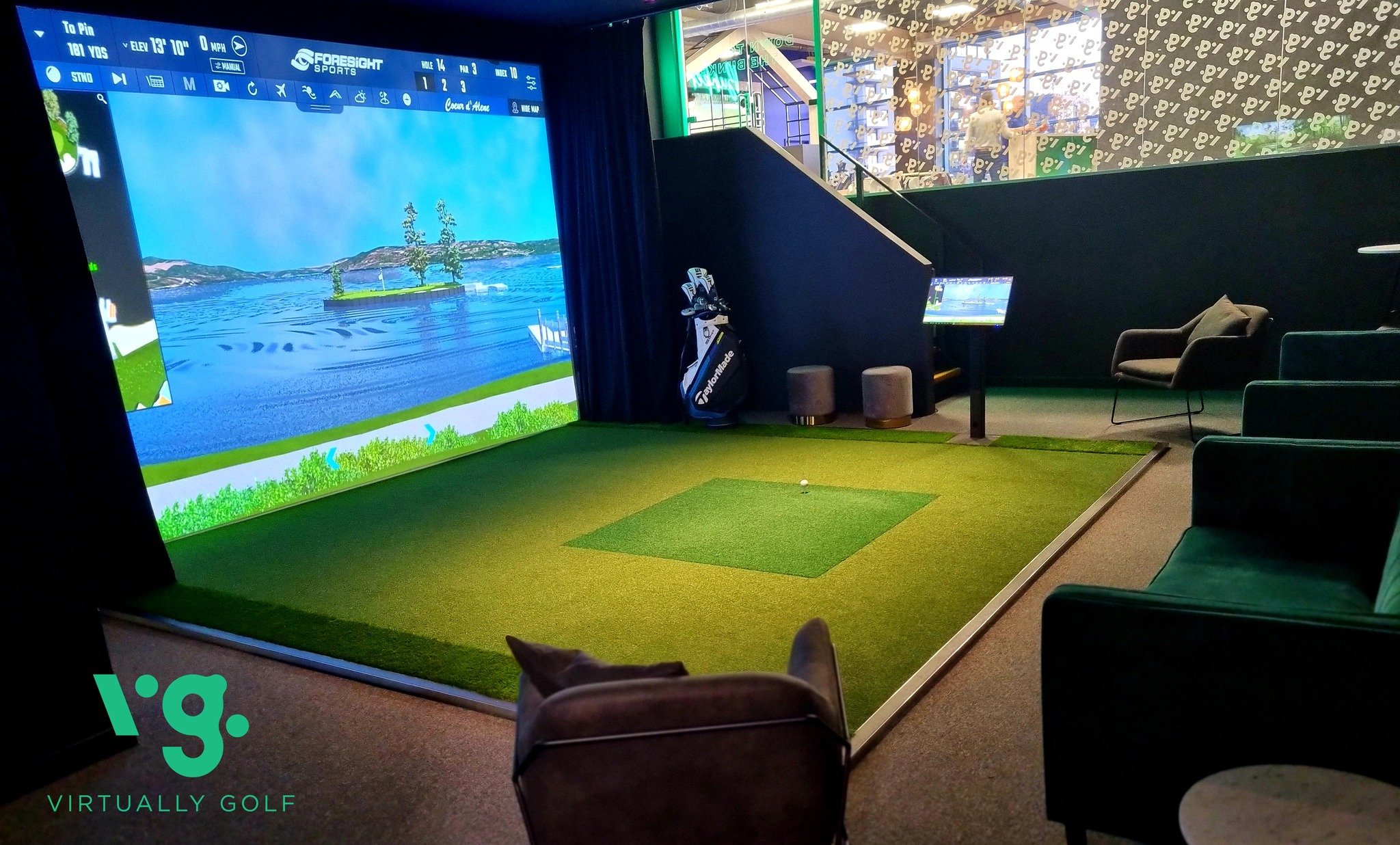CASE STUDY
From Screen to Green
Virtually Golf Drives a New Wave of Golfers with High-Tech, Inclusive Fun

Name: Stephen Clark
Role: Managing Director and founder of Virtually Golf
About: Based in Lincoln, Virtually Golf is an indoor golf entertainment venue with a Managing Director who is actively trying to increase on-course participation.
With simulators, big TV screens, areas to study or hold meetings and even a karaoke machine, Virtually Golf offers an indoor entertainment facility that goes beyond golf. Managing Director Stephen Clark has a passion, not only for his business and the experience it can provide, but for the sport as a whole. He is invested in encouraging as many visitors as possible to his facility to engage with the game beyond the four walls of Virtually Golf.
What position does Virtually Golf occupy in someone's golf participation journey?
We consider ourselves a place for people to come no matter where they are at in their participation journey – from newcomers to avid golfers. However, our model focuses more specifically on attracting beginners.
How would you describe the demographic of visitors to Virtually Golf?
We've noticed a balance between male and female customers, which is what the business would expect with our model. The age range for the last 12 months shows the age groups 35 to 44 (34 percent) and 25 to 34 (23 percent) to be the most common, but we have visitors from as young as four and up to over 65s.
VIRTUALLY GOLF IN NUMBERS
We take a look at the revealing numbers behind Virtually Golf and why they’re engaging people with golf in a whole new way.
FOUR
The age of their youngest visitor
65%
Customers Virtually Golf estimate are non-golfers…
50%
…half of whom they estimate are keen to continue their golfing journey
How does Virtually Golf differ from other venues offering indoor golf?
We saw the indoor golf market following one of two paths: either a sports bar approach or looking to adopt the traditional old-fashioned appearance of a clubhouse. We felt both approaches could alienate younger generations, families, and individuals. Virtually Golf has looked to create a business offering a family focus. As a city-centre venue, we are accessible, and our branding and interior design are distinct from anything you’d associate with golf, which allows customers to feel more comfortable.
We offer market-leading technology and equipment, giving customers access to what a ‘real golfer’ would have but without the additional cost. And crucially, we have membership packages geared towards non-golfers. We’ve had great success in family memberships.
We have a great case study on a dad who plays at Virtually Golf and, because of the family membership, his entire family now plays – from grandparents to his kids and his brother.
“Our model focuses more specifically on attracting beginners”

How many new golfers who visit Virtually Golf aspire to play on-course golf?
We aim to split our audience 50/50 between non-golfers and golfers. However, currently we are seeing that 65 percent of our customers at Virtually Golf are non-golfers and beginners, with around half of those seeking to actively engage further with the game and play on-course.
This is something we are trying to encourage more of and we’re working with schools and local clubs to offer a route to the course. We have an initiative called ‘Screen to Green’ that aims to provide players with the knowledge, skills, and confidence to prepare them to play on a course.

Get golf business insights straight to your inbox
Sign up for the first look at the latest news, features, exclusive interviews and podcast episodes with our monthly newsletter
